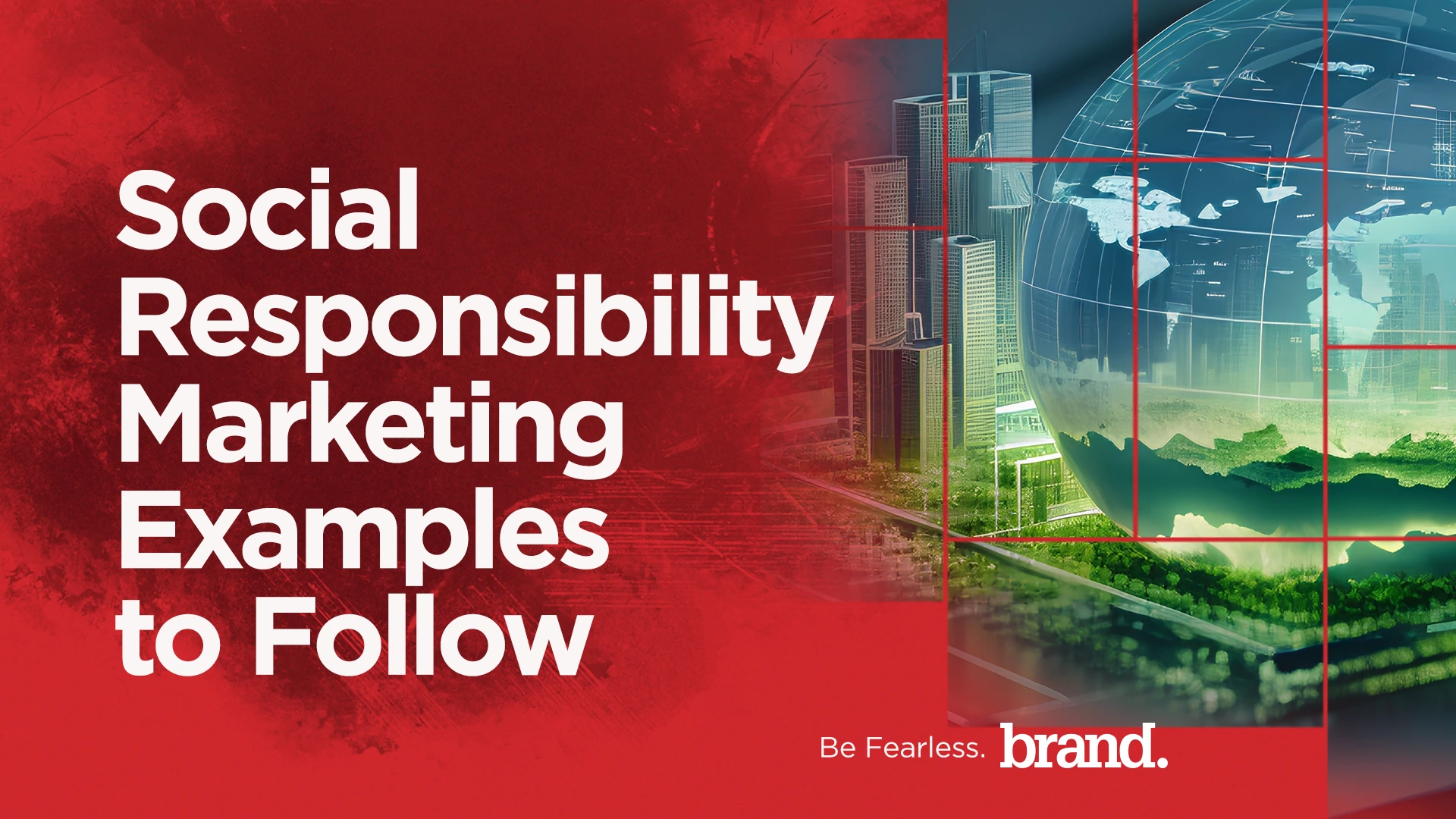Integrating Social Responsibility Into Marketing
Consumers expect more from brands than just products. They expect authenticity, empathy and purpose. They expect brands to share their values or demonstrate values that consumers can respect and embrace. They expect brands to have a sense of social responsibility that compels them to make a positive difference in the world.
For brands, social responsibility is now much more than a series of looks-good-feels-good stories and photo ops on the About Us page. It’s an essential strategic pillar. And integrating social responsibility in marketing is about building a brand that resonates with consumers at a deeper level. One that earns trust and drives meaningful engagement.
The Shift Toward Purpose-Driven Marketing
According to the Edelman Trust Barometer, 64% of consumers now choose, switch, avoid, or even boycott a brand based on its stand on societal issues. Social responsibility isn’t a trend, it’s a consumer mandate. More than ever, audiences are rewarding companies that align their marketing with their values and take action on social causes.
This evolution has reshaped what successful marketing looks like. It’s no longer just about promoting features or discounts. It’s also about telling human-centered stories that reflect core values and inspire action.
What Is Social Responsibility in Marketing?
Social responsibility in marketing means integrating ethical, sustainable, and cause-oriented strategies into every touchpoint with your audience. It’s a commitment to contribute to societal good while driving business growth. From environmental sustainability to community development and DEI initiatives, socially responsible brands demonstrate their values not through slogans, but through action.
Integrating Social Responsibility Into Your Marketing Campaigns
It’s critical that you integrate social responsibility in marketing in a way that feels natural, powerful and results-driven. Here are six steps to follow:
- Start With Your Core Values
Authenticity is non-negotiable. Define the social causes that align with your brand’s DNA. Whether it’s climate action, education or equality, your social responsibility initiatives should emerge organically from your brand’s beliefs, not from external influences or pressure.
- Make It Tangible and Measurable
Generic pledges fall flat. Consumers want specifics. You need to build campaigns with clear metrics – the number of trees planted, scholarships funded or tons of carbon offset. The more measurable and transparent, the more impactful.
- Embed Initiatives Across Channels
Social responsibility shouldn’t be siloed. It should appear in your email strategy, paid ads, packaging, website and social content – cohesively. For example, Ben & Jerry’s integrates social justice narratives into everything from flavor names to press releases and digital content.
- Partner with Communities
Genuine social responsibility in marketing often comes from listening to real voices from your communities and integrating them into campaign development. Nike’s “You Can’t Stop Us” campaign, developed in collaboration with real athletes and activists, is a stellar example. It earned more than 50 million YouTube views and reaffirmed Nike’s commitment to diversity and resilience.
- Lead With Storytelling
Craft storylines and narratives that move people and turn dry CSR reports into emotionally compelling content that drives connections and conversions.
- Tone: Position your brand as both the “friendly expert” and a savvy strategist.
- Clarity: Your messages need to be understood instantly. Vague messaging erodes trust.
- Consistency: Your messages must be cohesive across all touchpoints.
- Credibility: Back them up with data, partners and transparency.
- Relevance: Align them with current cultural or seasonal movements to amplifiy relevance.
- Celebrate Progress, Not Perfection
No one expects you to have it all figured out. What matters is the journey. Show your social responsibility evolution. Share behind-the-scenes content, admit past blind spots, and highlight future goals. Exposing your vulnerability in the right way strengthens trust.
More Stellar Examples of Social Responsibility In Marketing
LEGO’s Sustainability Initiative – LEGO’s goal to produce all of their plastic bricks from sustainable materials by 2030 shows long-term commitment. According to Kantar, their campaign promoting eco-friendly bricks earned global media coverage and increased brand perception by 12 points in Europe.
Always’ “Like a Girl” Campaign – This campaign tackled gender stereotypes and generated more than 85 million global views. It led to a 4% increase in brand equity and made “Like a girl” a worldwide phrase of empowerment.
TOMS’ “One for One” Model – The original TOMS social responsibility campaign donated one pair of shoes for every pair purchased. It delivered over 100 million shoes and became a blueprint for socially-conscious startups.
All of this reinforces the fact that social responsibility is more than a passing phase and more than an isolated campaign tactic. It’s a brand-building engine
BRAND has helped our clients harness the power of social responsibility in marketing with thoughtful, values-aligned and tailored campaigns, sponsorships and partnerships. These not only communicate their social missions, but connect them authentically with their audiences and inspire participation and change.
Contact us, today. And let’s start building social responsibility campaigns that make a real difference in your community, in our nation and on your bottom line.






